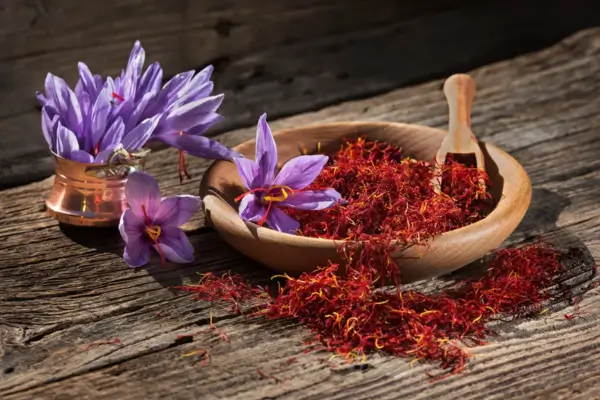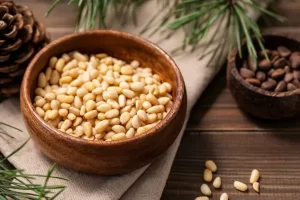Saffron, also known as the “red gold,” is a spice valued worldwide for its vibrant color, unmistakable aroma, and versatility.
But what is the story behind this special ingredient?
How is it cultivated, and how can we use it in our daily lives?
In this article, we explore the origins, curiosities, and ways to enjoy true saffron in cooking.
Origin and History of Saffron
Saffron is derived from the dried stigmas of the Crocus sativus flower, which requires specific climate conditions and careful attention to grow.
Its origin dates back thousands of years, with historical records of its use in Ancient Greece and the Middle East. For centuries, it was used as a dye, seasoning, medicine, and even as a trading currency due to its rarity and high value.
Currently, Iran leads global saffron production, accounting for about 90% of the world supply.
Other countries such as India, Spain, Greece, and Morocco are also known for their unique varieties, influenced by the climate and soil of each region.

Main Saffron-Producing Regions
- Iran: The world’s largest producer, famous for the aromatic intensity and quality of its saffron.
- India (Kashmir): Known for its deep red hue and delicate flavor.
- Spain: Home of the renowned “La Mancha Saffron,” widely used in European cuisine.
- Greece: Known for saffron grown in the Kozani region, famous for its purity.
- Morocco: Produced with traditional methods that ensure an authentic flavor.
Saffron cultivation is extremely labor-intensive. It takes about 150 flowers to produce just 1 gram.
Moreover, the entire process, from harvesting to drying, is done manually, which increases its value.
How to Use Saffron in Cooking
Saffron is a spice that enhances color, aroma, and flavor in a variety of dishes. To make the most of it, follow these tips:
- Hydrate before using: Soak saffron threads in hot water, milk, or broth for about 15 minutes. This helps release its aromatic compounds.
- Use sparingly: Just a few threads are enough to transform a dish.
- Add at the right time: Include saffron at the beginning or middle of cooking so its flavors blend well into the recipe.
Famous Saffron Recipes
| Spanish Paella | A classic that combines rice, seafood, and the distinct taste of saffron. |
| Saffron Risotto | A creamy Italian dish with a golden color and refined flavor. |
| Saffron and Honey Dessert | A sweet and sophisticated treat, common in the Middle East. |

Health Benefits of Saffron
In addition to being a versatile spice, saffron is recognized for its medicinal properties. Here are some of its benefits:
- Antioxidant power: Protects the body against cell damage and inflammation.
- Mood improvement: Studies suggest it may help treat mild depression.
- Digestive aid: Promotes healthier digestion and relieves stomach discomfort.
- Eye health: Rich in carotenoids, it helps prevent age-related eye diseases.
- Heart health: Stimulates blood circulation and helps regulate blood pressure.
Interesting Facts About Saffron
- It is the most expensive spice in the world, costing more than R$ 70,000 per kilo.
- Each Crocus sativus flower produces only three stigmas, explaining its rarity.
- It has been used in ancient religious ceremonies and as a natural medicine in various cultures.
Conclusion
True saffron is more than just a spice: it is a symbol of tradition, culture, and sophistication.
Adding it to your kitchen transforms ordinary recipes into rich culinary experiences full of history.
Try the “red gold” and discover the unique impact it can bring to your dishes.
See also:




